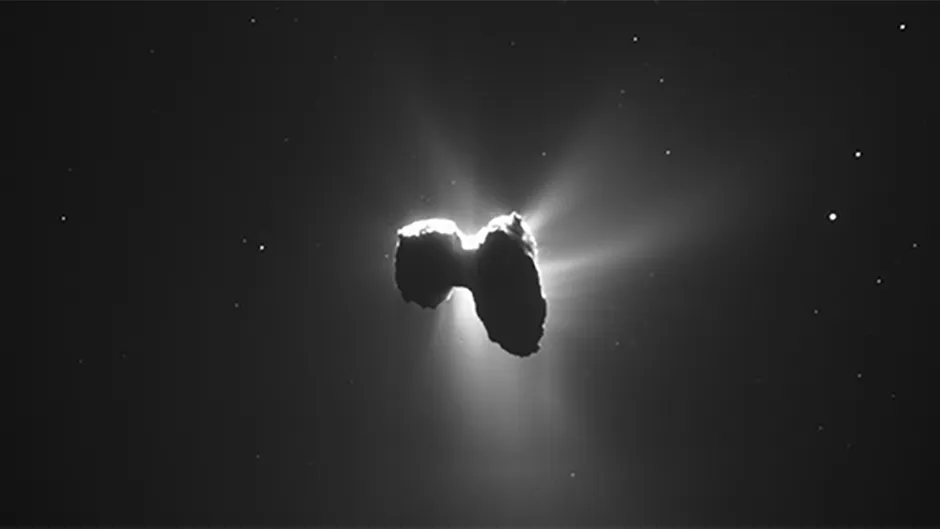An illustration showing how the engineers fired high-speed water molecules (left) at oxidized silicon and iron surfaces, observing the production of a plume that included molecular oxygen. Oxygen atoms are red and hydrogen are blue. Image Credit: Caltech
A pair of chemical engineers may have solved the mystery as to how comets produce and expel oxygen gas in space.
The discovery used research from ESA’s Rosetta mission, which saw scientists land a spacecraft on the surface of Comet 67P/Churyumov-Gerasimenko in order to study it in detail.
Previous studies of Rosetta data showed that comets produce oxygen gas, but it was not known why this would be the case.
One theory suggested that the oxygen may have frozen inside the comet 4.6 billion years ago when the Solar System was in its infancy.
But Konstantinos P. Giapis, who works at Caltech, believes otherwise.
Giapis studies chemical reactions that involve charged atoms, called ‘ions’, colliding with semiconductor surfaces as a means to improve computer performance technology.
He and study co-author Yunxi Yao conducted lab experiments to apply their knowledge to solve the mystery.
“I started to take an interest in space and was looking for places where ions would be accelerated against surfaces,” he says.
“After looking at measurements made on Rosetta’s comet, in particular regarding the energies of the water molecules hitting the comet, it all clicked.
What I’ve been studying for years is happening right here on this comet.”

The theory goes that water vapour molecules stream off the comet as water ice is melted by the Sun.
The Sun’s ultraviolet light charges the water molecules, and this ionised water is then blown back towards the comet by solar winds.
When these water molecules hit the comet’s surface, they strike materials like rust and sand, which have oxygen bound in them.
The molecules pick up another oxygen atom and O2 is formed, which is the oxygen we breathe on Earth.
The research suggests that, rather than being primordial, the oxygen is actually being produced in real time.
Perhaps other astrophysical bodies, such as exoplanets, might produce oxygen in the same way.
This theory could influence how scientists search for signs of life on exoplanets in future.
“We had no idea when we built our laboratory setups that they would end up applying to the astrophysics of comets,” says Giapis.